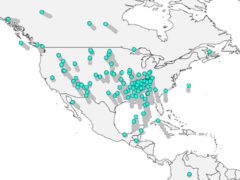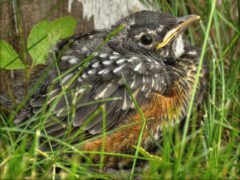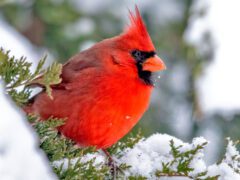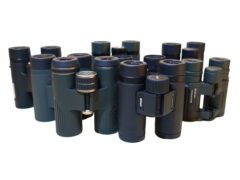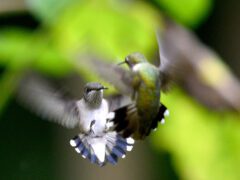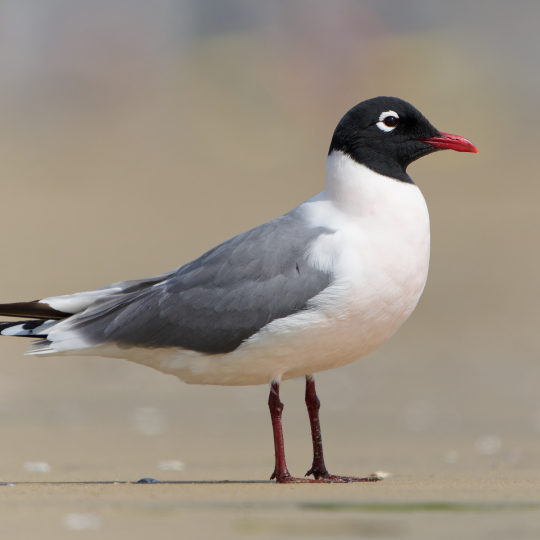The Four Keys to ID
- Size & Shape
A medium to large gull with rather long, pointed wings (wingtips extend far beyond the tail when perched). Although smaller and slimmer than other “large gulls” like Herring Gull, this species has a larger head and thicker bill than “medium” gulls like Ring-billed.
Relative Size
Larger than a Ring-billed Gull, smaller than a Herring Gull.

 between crow and goose
between crow and gooseMeasurements
- Both Sexes
- Length: 20.5-25.2 in (52-64 cm)
- Weight: 19.2-35.3 oz (545-1000 g)
- Wingspan: 53.1-59.1 in (135-150 cm)
© Dorian Anderson / Macaulay Library
- Color Pattern
Adult in breeding plumage is white below, slate gray above, with white head, black wingtips, yellow eye, bright yellow legs, and yellow bill with red spot on lower mandible. Adult in nonbreeding plumage is similar but the head and neck are spotted brown. Juvenile is brown (with pale feather edges) above, paler with gray-brown mottling below, with darker primaries and blackish tail band. Subadult plumages are intermediate between adult and juvenile. Adult plumage is acquired in the fourth year.
© Luke Seitz / Macaulay Library - Behavior
Forages by walking, flying, or swimming in coastal areas and hunting prey mostly visually, whether small schooling fish or invertebrates in the intertidal zone. Often joins mixed-species gull flocks where prey is concentrated. Also scavenges around fishing boats and landfills. Often rests and forages in flocks, especially during the nonbreeding season.
- Habitat
Nests mostly in northern European and Russian coastal areas, on rocky islands, cliffs, saltmarshes, and islands in lakes and rivers. During migration and winter, frequents numerous aquatic habitats: rivers, lakes, bays, beaches, landfills, open ocean.
© Jay McGowan / Macaulay Library
Regional Differences
Taxonomists often recognize five or six subspecies of Lesser Black-backed Gull. North American records refer mostly to the western European subspecies graellsii. It has a paler gray back and upperwings than intermedius (northwestern Europe) and is much paler than fuscus (in the Baltic region), both of which have been reported as very rare vagrants in eastern North America. Farther east, in Russia, many ornithologists group the subspecies heuglini, taimyrensis, and barabensis with Lesser Black-backed Gull. Some of the Lesser Black-backed Gulls on the U.S. Pacific coast appear to be consistent with this Russian group.


































